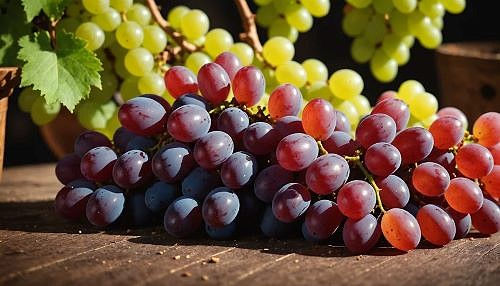Hanseniaspora: Wild Lovers of Sweet Grapes
- Sylvia Rose

- Jan 18
- 3 min read
Hanseniaspora is a genus of wild yeast, notable for flavors and nuances it brings to wine. Hanseniaspora yeast loves sugar-rich environments and is especially attracted to ripe grapes. Its untamed nature can make it erratic.

Hanseniaspora is a well-known wild yeast genus with up to 20 species. They're on the surface of grapes, leaves, in the sweet juice of grape musts, and in the soil around vineyards, especially in sunny regions like California.
This wild yeast results in a unique array of flavors and aromas during fermentation. Wines made with Hanseniaspora have notes ranging from tropical fruits to spice or earthy undertones.

In fermentation, yeast turns sugars into alcohol and carbon dioxide. In many winemaking traditions, Hanseniaspora yeasts start the process. They generate distinct flavor compounds to enrich the wine’s aroma and profile.
Winemakers value this flavor play as it differentiates their products in a saturated market. Hanseniaspora is often a key ingredient in creating wines with character and distinction, expressing a sense of place or terroir.

Compared to other yeasts, Hanseniaspora produce higher levels of esters like ethyl acetate, contributing fruity notes to the wine. The wild nature of Hanseniaspora also presents challenges.
While excellent at initiating fermentation, Hanseniaspora spp. can be less efficient at completing the process. Action of wild yeasts can cause volatile acidity or stuck fermentations.

Incomplete processes or unwanted flavors result from unstable fermentation. To counter this, many winemakers use a dual fermenting technique.
In this method, fermentation begins with Hanseniaspora, followed by the introduction of Saccharomyces cerevisiae after a few days. This approach captures the wild yeast's complexity while ensuring complete fermentation.

S. cerevisiae is familiar as brewer's or baker's yeast. Strains have been carefully selected and cultivated over generations for their reliable fermentation characteristics, producing consistent and predictable wines.
The double fermentation approach allows winemakers to exploit the unique benefits of Hanseniaspora while mitigating its risks. It enables wines to be both complex and stable, reflecting the biodiversity of a vineyard.

Winemakers in regions like Alsace, France, establish a unique terroir by incorporating Hanseniaspora into their processes. Taste tells the story of origin.
Integration of Hanseniaspora into winemaking shows shifting trends in the industry. As consumers develop a taste for more intricate flavors, many artisanal producers are reviving traditional practices of using wild yeasts.

Non-Fiction Books:
Fiction Books:
READ: Lora Ley Adventures - Germanic Mythology Fiction Series
READ: Reiker For Hire - Victorian Detective Murder Mysteries


